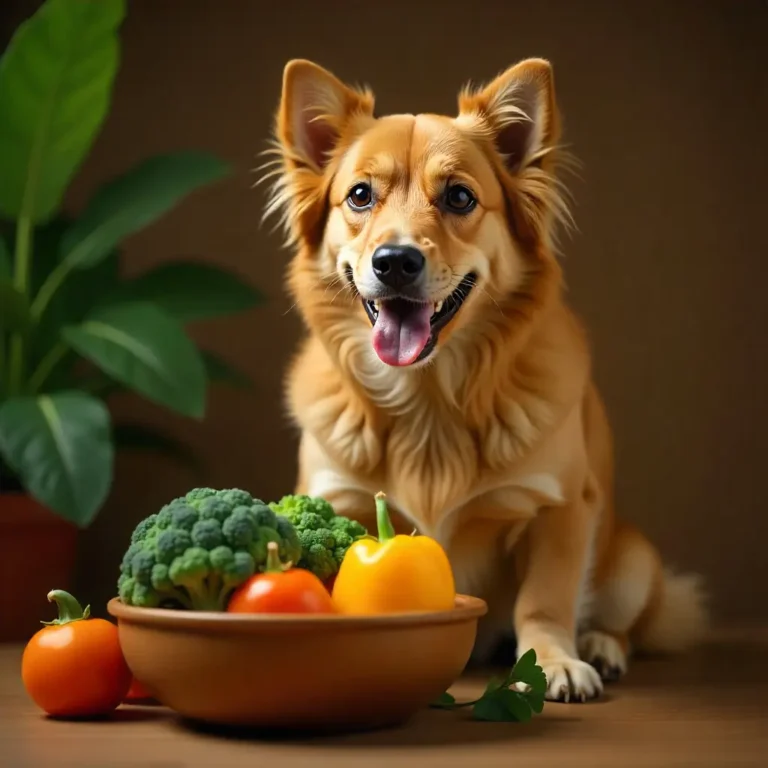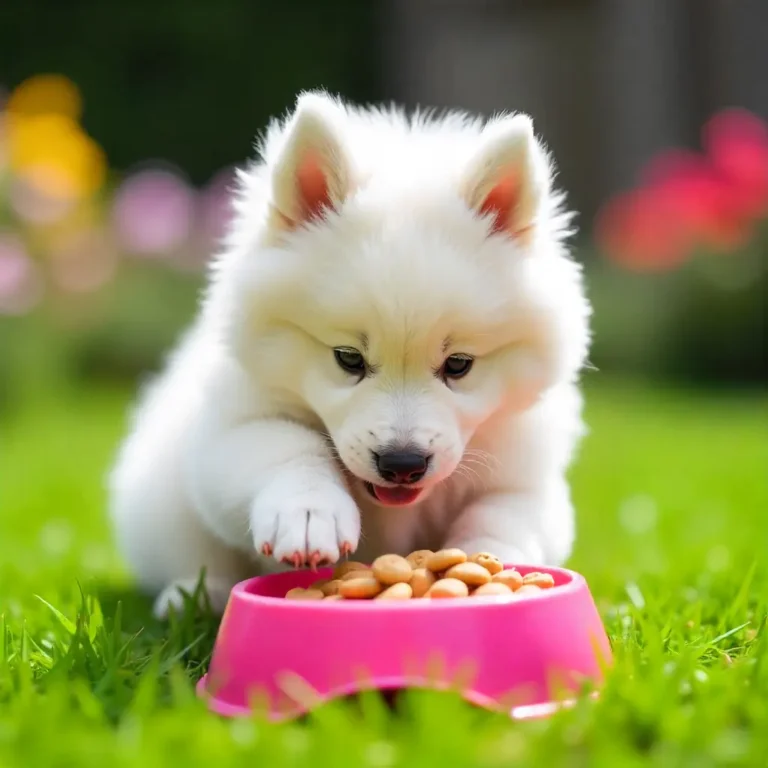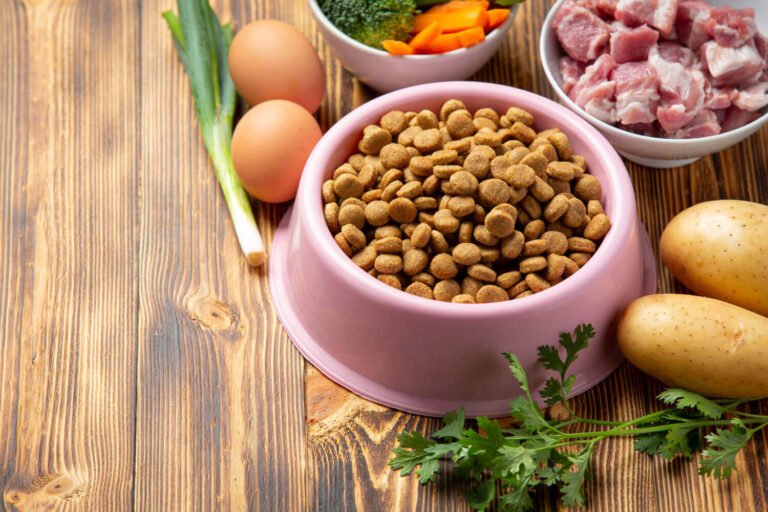Why Vegetables Matter for Dogs
Most people think dogs should only eat meat because they’re “natural carnivores.” But that’s not entirely true. While protein is super important for your pup, dogs are actually omnivores – meaning they thrive on a balanced diet that includes both meat and plants. And that’s where vegetables come in.
Vegetables for dogs aren’t just fillers. They’re loaded with fiber, vitamins, antioxidants, and minerals that keep your dog’s body working smoothly. Think of them as nature’s supplements – but tastier and healthier. From helping with digestion to boosting immunity, veggies are a game-changer for canine health.
By the end of this guide, you’ll know:
Which vegetables are safe for dogs (and which are not).
The healthiest vegetables for dogs to add to their meals.
Exactly how to prepare vegetables for dogs in simple, safe ways.
So if you’ve ever wondered “Are vegetables good for dogs?” or “What vegetables can dogs eat every day?”, you’re in the right place.
Health Benefits of Vegetables for Dogs
Adding vegetables to your dog’s diet is like giving them nature’s multivitamin. Below are the main benefits, explained in simple, everyday language:
1. Rich in Vitamins and Minerals
Vegetables are loaded with vitamin A (eye health), vitamin C (immune system), vitamin K (blood health), potassium, calcium, and magnesium. These nutrients help keep your dog’s bones strong, coat shiny, and body energized.
Example: Carrots provide beta-carotene, which supports good eyesight.
For a deeper breakdown of nutrients beyond veggies, check out our full guide: Dog Food Ingredients Explained.
2. Fiber for Better Digestion
Dogs who struggle with constipation or diarrhea often benefit from veggies. Fiber in vegetables like pumpkin, green beans, and spinach keeps digestion smooth and gut bacteria happy.
Pro Tip: Start small, especially if your dog has a sensitive stomach.
3. Weight Management & Low-Calorie Snacks
Many vegetables are low in calories but high in nutrients, making them perfect for overweight pups. Instead of fatty treats, try cucumber slices or steamed zucchini.
Curious how many calories your dog actually needs? Use our free Dog Food Calculator to figure it out.
4. Antioxidants to Fight Disease
Some vegetables, like spinach and broccoli, are packed with antioxidants that fight inflammation and reduce the risk of chronic diseases like arthritis or even cancer.
5. Hydration Support
Cucumber, celery, and lettuce are over 90% water — great for dogs who don’t drink enough on hot summer days.
Can Dogs Eat Vegetables? The Vet’s Perspective
The short answer: Yes, dogs can eat vegetables – but not all of them.
Some vegetables are perfectly safe (and even recommended), while others can be toxic. For example, carrots and green beans are dog-friendly, but onions and garlic are dangerous.
Why Vegetables Are Good for Dogs
Adding the right veggies to your dog’s diet can make a big difference:
Better Digestion: Veggies like pumpkin and zucchini are full of fiber that helps regulate your dog’s stomach and prevents constipation.
Weight Management: Low-calorie vegetables like broccoli or cucumber make great snacks for overweight dogs.
Shiny Coat & Healthy Skin: Leafy greens packed with vitamin A and antioxidants keep your pup’s coat glossy.
Disease Prevention: Antioxidant-rich vegetables may help reduce the risk of chronic diseases and support a stronger immune system.
Can Dogs Eat Vegetables Every Day?
Yes, but in moderation. Veggies should only make up about 10–20% of your dog’s diet, depending on their breed, size, and health needs. They should never replace balanced dog food, but they can be used as nutritious toppers or healthy treats.
So, when you ask “What are the healthiest vegetables for dogs?”, think of options like carrots, spinach, broccoli, or peas – all safe, crunchy, and full of natural goodness.
25 Best Vegetables for Dogs (with Benefits & Prep Tips)
1. Carrots – Crunchy, Low-Calorie, Dental Health
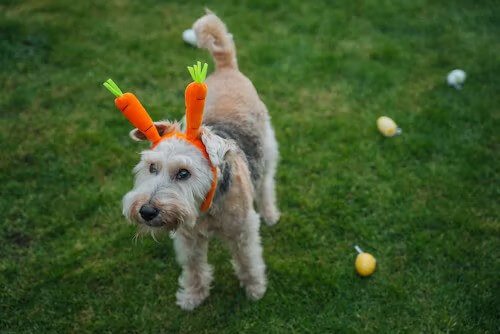
Carrots are one of the best dog-friendly veggies! They’re naturally sweet, crunchy, and low in calories. Rich in beta-carotene (vitamin A), they support eye health, immunity, and skin/coat shine. Chewing raw carrots can also help clean your dog’s teeth and massage gums.
Benefits:
Dental health (natural toothbrush effect)
Eye health & strong immunity (vitamin A & antioxidants)
Low-calorie snack option
How to prepare:
Raw as a crunchy treat, steamed/boiled and mashed into meals, or even frozen for teething puppies.
Portion size:
1–2 baby carrots daily for medium dogs.
Caution:
Too much vitamin A over time may cause issues, so keep portions moderate.
2. Broccoli – Fiber-Rich, Cancer-Fighting Compounds
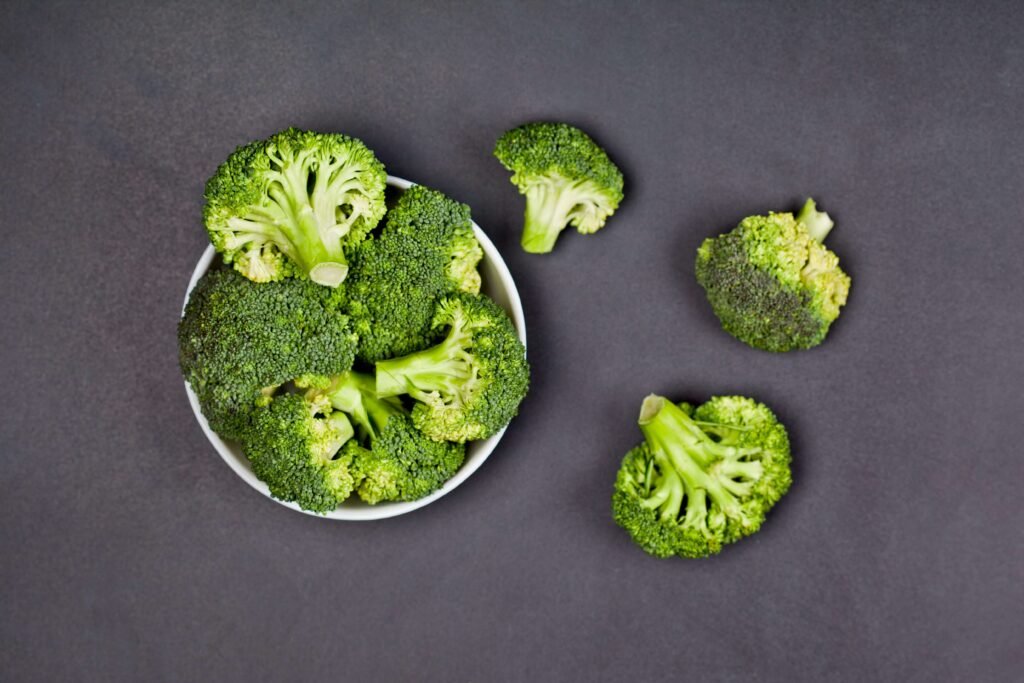
Broccoli is packed with fiber, vitamin C, and sulforaphane (a compound linked to cancer-fighting properties). It also helps digestion and boosts immunity.
Benefits:
Fiber for healthy digestion
Cancer-preventing antioxidants (sulforaphane)
Immune system support (vitamin C)
How to prepare:
Lightly steam or boil broccoli and chop into bite-sized pieces. Both florets and stalks are safe in moderation.
Portion size:
A few small florets mixed into meals, 1–2 times per week.
Caution:
Too much broccoli can cause gas or stomach upset due to isothiocyanates.
Too much broccoli can cause gas or stomach upset due to isothiocyanates.
3. Spinach – Iron & Antioxidants (But Watch Oxalates)
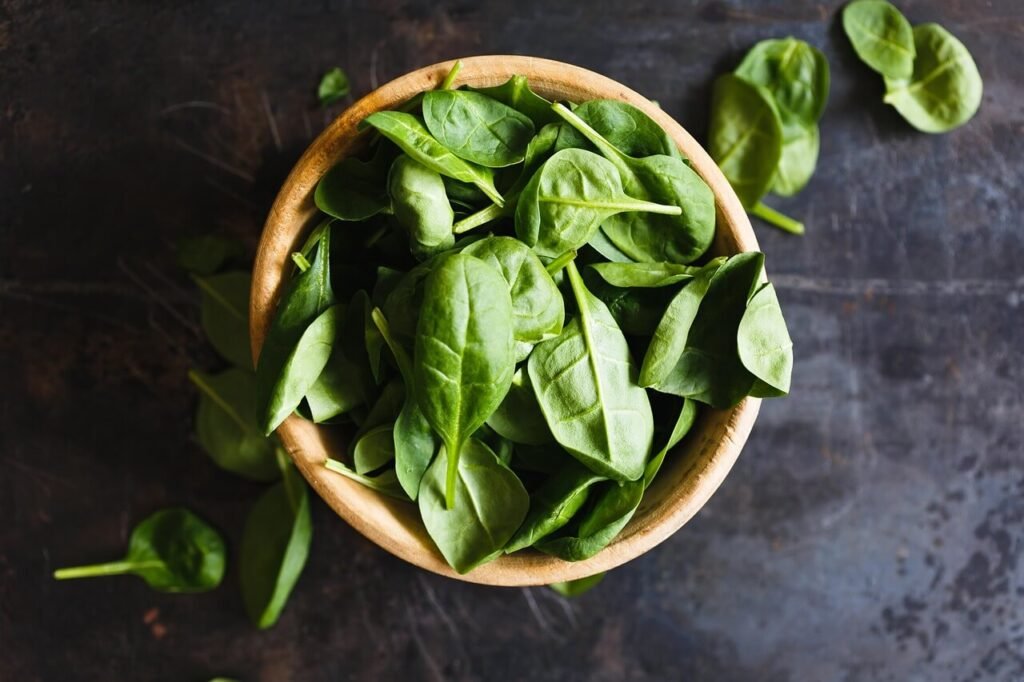
Spinach is rich in iron, vitamin K, antioxidants, and fiber. It supports blood health, bone strength, and detoxification. However, spinach also contains oxalates, which can affect kidney health if fed in large amounts.
Benefits:
Boosts red blood cell health (iron, folate)
Strengthens bones (vitamin K, magnesium)
Detox & anti-inflammatory benefits
How to prepare:
Lightly steam spinach to reduce oxalates, then chop and mix into food.
Portion size:
A few leaves mixed into meals occasionally.
Caution:
Avoid giving spinach daily, especially for dogs with kidney issues.
Pro tip: Spinach is best served as an occasional booster, not a daily staple.
4. Sweet Potatoes – Beta-Carotene & Energy Boost
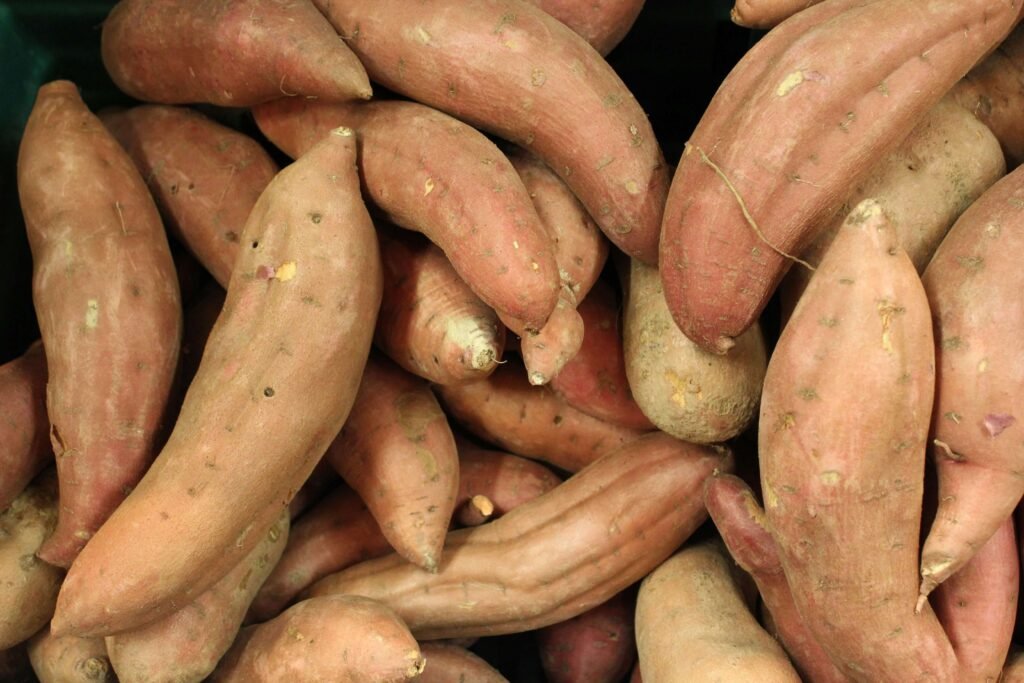
Sweet potatoes are a dog superfood! They’re full of beta-carotene, fiber, vitamins B6 and C, and complex carbohydrates for long-lasting energy. They’re also gentle on sensitive stomachs.
Benefits:
Eye & skin health (beta-carotene → vitamin A)
Digestive health (high fiber content)
Great for active dogs needing sustained energy
How to prepare:
Bake, boil, or steam—then mash or cube. Always serve cooked, never raw.
Portion size:
1–2 tablespoons for small dogs, ¼ cup for larger dogs.
Caution:
Overfeeding can lead to weight gain due to natural sugars.
Unique tip: Freeze mashed sweet potato into small cubes for a cool summer snack.
5. Green Beans – The Weight-Loss Veggie
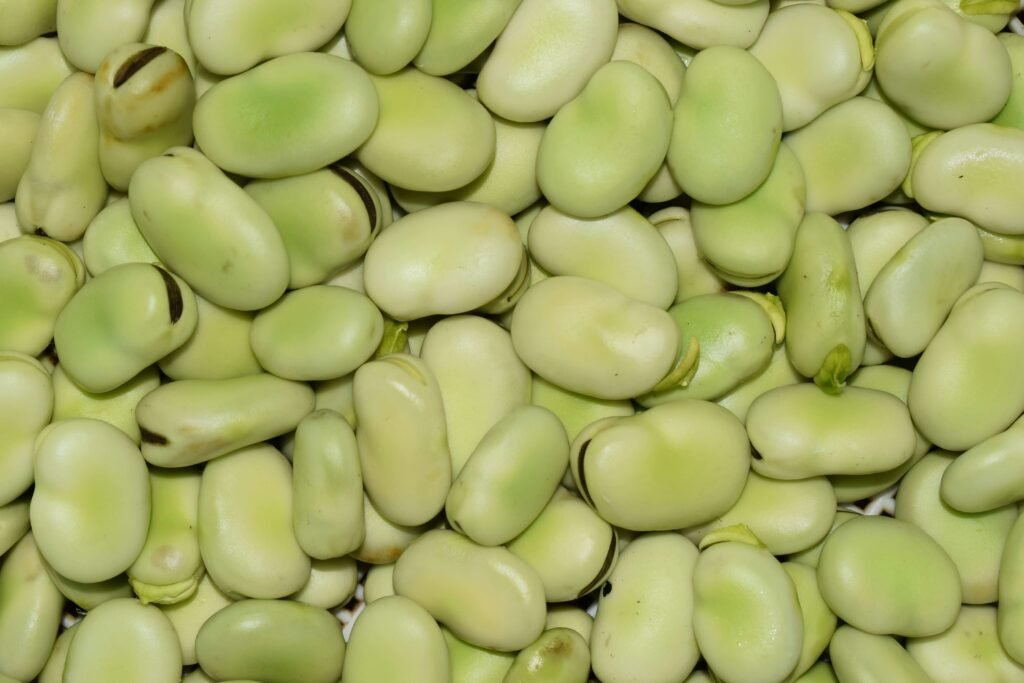
If your pup struggles with weight gain, green beans are a lifesaver. Vets often recommend them as a low-calorie filler in meals.
Benefits:
Very low in calories yet filling.
Rich in fiber → helps digestion.
Good source of vitamin K and minerals.
How to prepare:
Serve raw (chopped), steamed, or boiled without salt.
Can also be frozen for a crunchy treat.
Portion size:
Small dogs: 2–3 beans as snacks.
Large dogs: a small handful.
Perfect replacement for fatty treats.
Caution:
Avoid canned beans with salt or seasoning.
Pro tip: Add green beans to meals when transitioning to a weight management plan.
6. Peas – Tiny Powerhouses of Protein
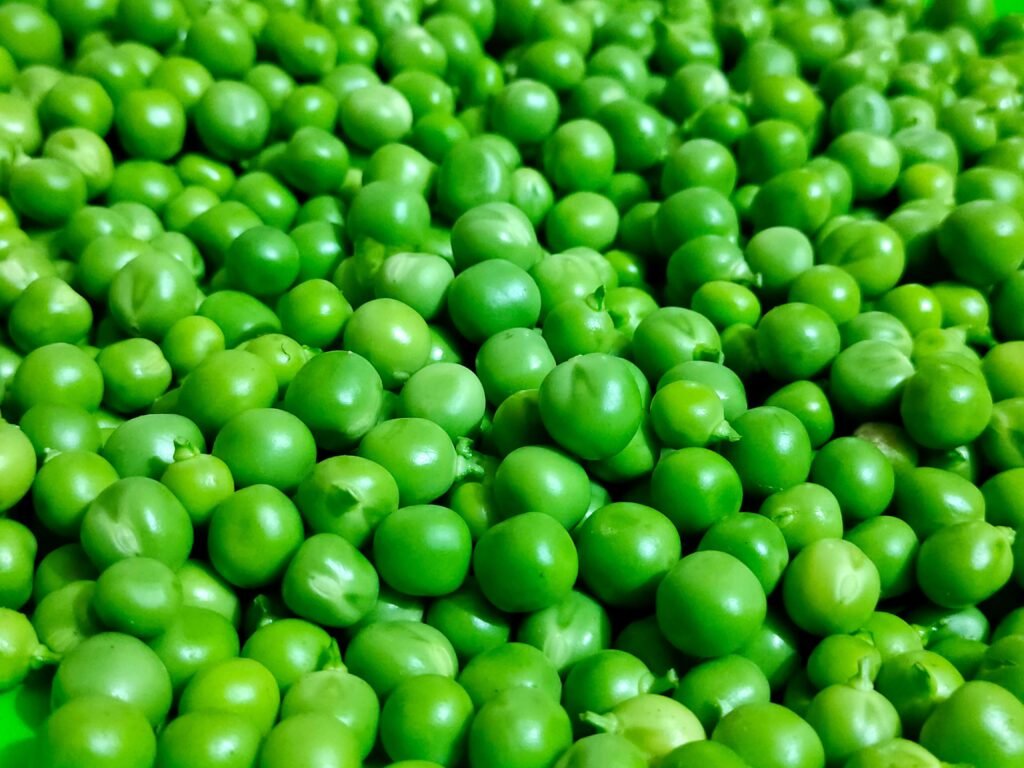
Peas may look small, but they pack a punch when it comes to nutrition.
Benefits:
High in plant-based protein (great for active dogs).
Rich in B vitamins → supports metabolism.
Good source of fiber and minerals like potassium.
How to prepare:
Fresh or frozen peas are best.
Mix into meals or mash for easy digestion.
Avoid canned peas (too much sodium).
Portion size:
Small dogs: 1–2 teaspoons.
Large dogs: 1–2 tablespoons.
Can be used in homemade training treats.
Caution:
Dogs with kidney problems should avoid peas (they contain purines).
Unique tip: Mix peas with carrots for a colorful, nutrient-packed snack bowl.
7. Kale – The Vitamin-Rich Leafy Green
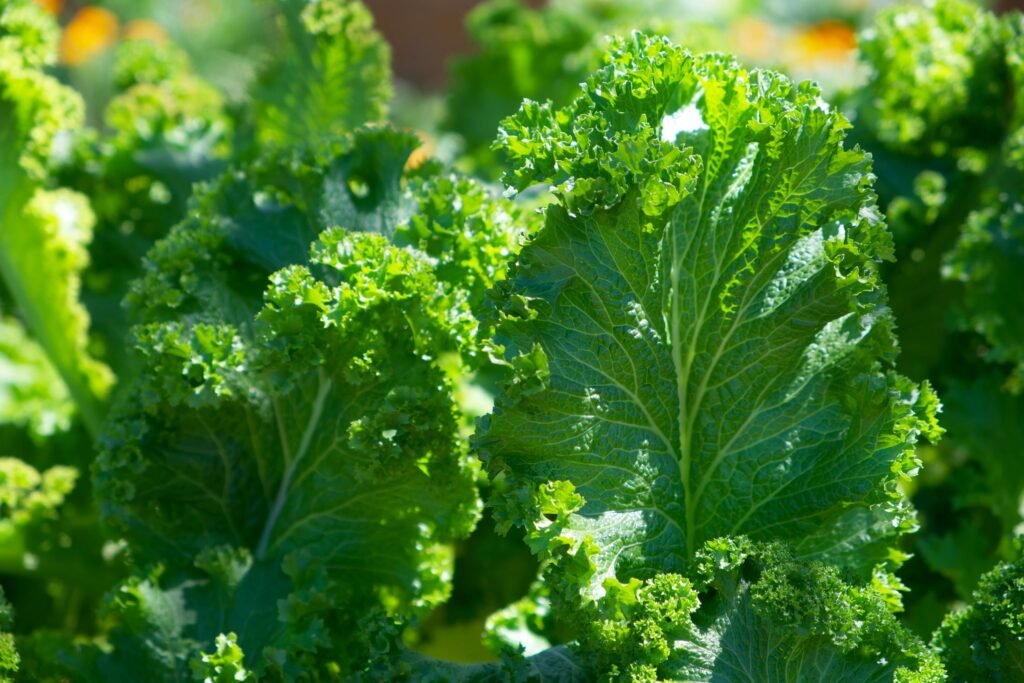
Kale is a nutritional powerhouse for dogs, but it’s also one that should be fed in moderation.
Benefits:
Packed with vitamins A, C, and K for immune health.
Contains calcium & magnesium for bone support.
Rich in antioxidants → helps fight inflammation.
How to prepare:
Lightly steam or chop raw into small pieces.
Mix into meals – avoid seasoning or oils.
Portion size:
Small dogs: ½ leaf.
Large dogs: 1–2 leaves, once or twice weekly.
Caution:
Too much kale can cause gas and contains oxalates & isothiocyanates, which may affect dogs with kidney or thyroid issues.
Pro tip: Rotate kale with safer greens (like green beans) instead of making it a daily veggie.
8. Cucumbers – The Hydrating Snack
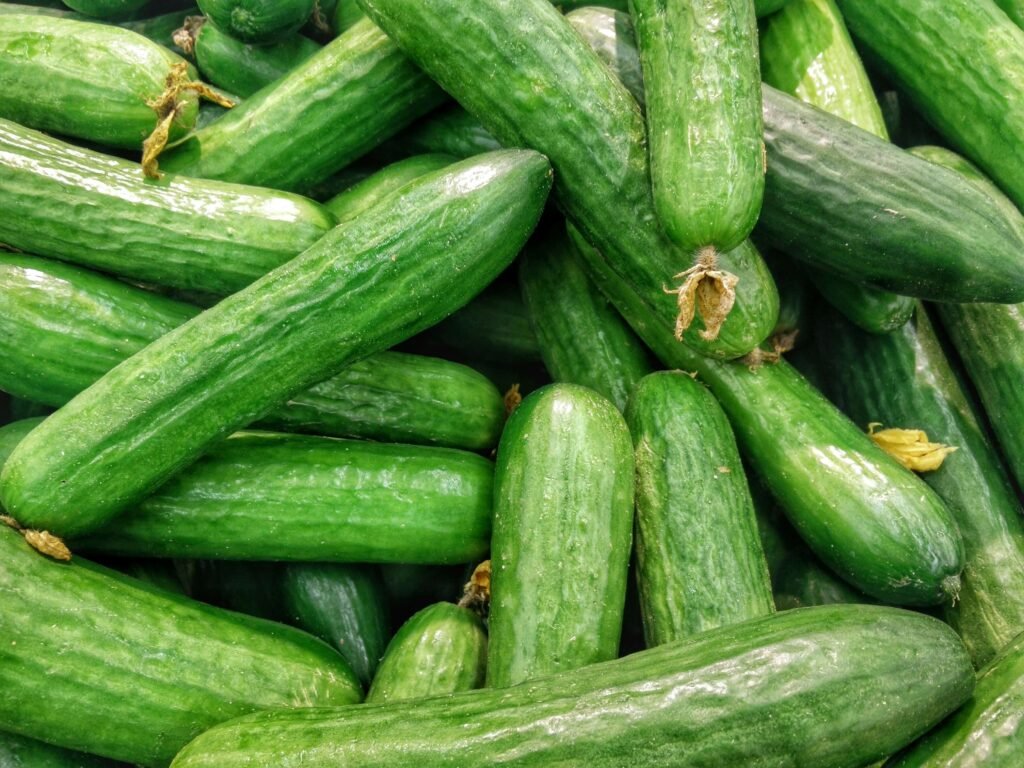
Cucumbers are 95% water, making them a hydrating, crunchy treat – especially in summer.
Benefits:
Low-calorie, weight-friendly snack.
Provides hydration & cooling.
Contains small amounts of vitamins K, C, and B.
How to prepare:
Slice into thin rounds or sticks.
Serve raw and plain (no salt, no dressing).
Portion size:
Small dogs: 2–3 slices.
Large dogs: 4–5 slices.
Perfect for overweight dogs as a “guilt-free” treat.
Caution:
Too much may cause stomach upset due to high water content.
Unique tip: Freeze cucumber sticks for a summer teething chew for puppies.
9. Celery – The Breath Freshener
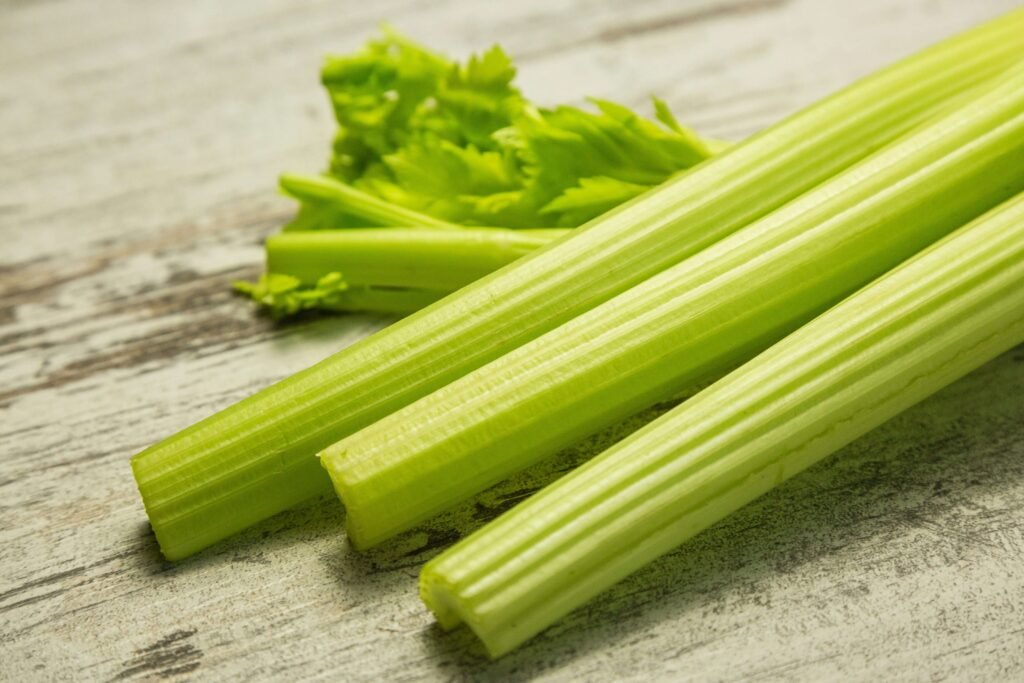
Celery is one of the few veggies that’s good for freshening your dog’s breath, thanks to its crunchy texture and high water content.
Benefits:
Natural low-calorie snack.
Provides vitamin A, C, and K.
Helps clean teeth & freshen breath.
How to prepare:
Cut into bite-sized chunks to avoid choking.
Serve raw or lightly steamed.
Portion size:
Small dogs: 1–2 small pieces.
Large dogs: 2–3 medium sticks.
Caution:
Stringy fibers can be hard to chew → always chop well.
Pro tip: Use celery as a crunchy training treat for larger dogs.
10. Pumpkin – The Digestive Hero
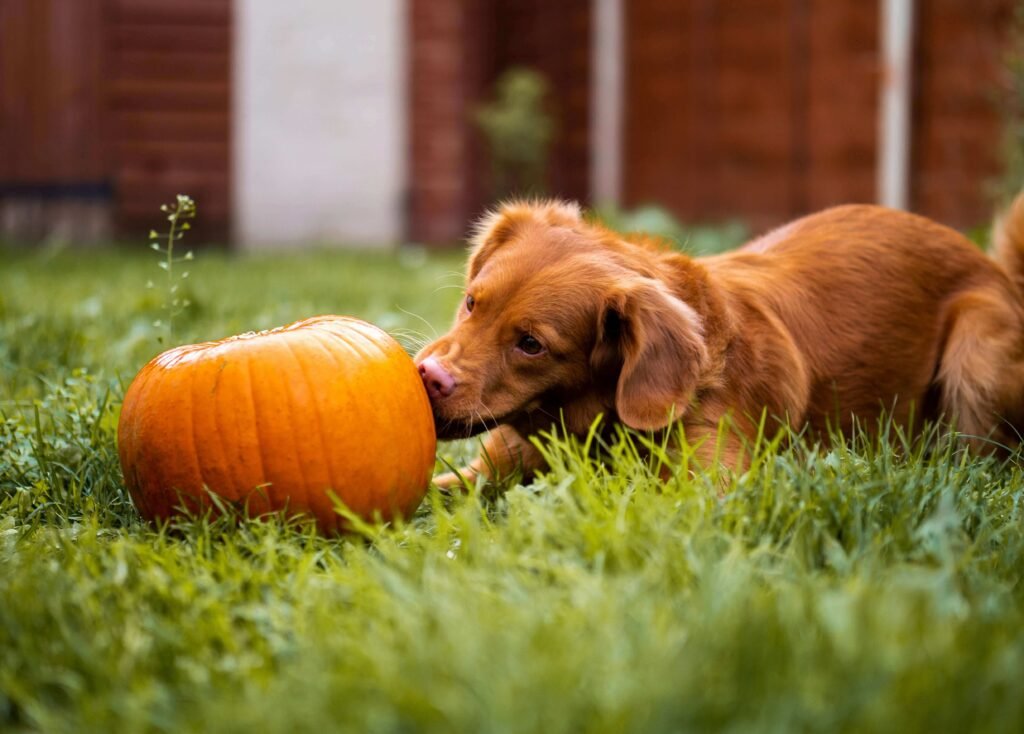
Pumpkin is one of the most recommended veggies by vets because it’s excellent for digestion.
Benefits:
High in fiber → helps both constipation & diarrhea.
Rich in beta-carotene (Vitamin A).
Supports weight management (low calorie, filling).
How to prepare:
Use plain cooked pumpkin (steamed, baked, or boiled).
Canned pumpkin (unsweetened, no spices) is also safe.
Portion size:
Small dogs: 1–2 teaspoons.
Large dogs: 1–2 tablespoons.
Great as a meal topper or stuffed inside a Kong toy.
Caution:
Avoid pumpkin pie filling (it has sugar & spices).
Unique tip: Mix pumpkin with plain yogurt for a stomach-soothing snack.
11. Zucchini – The Low-Calorie All-Rounder
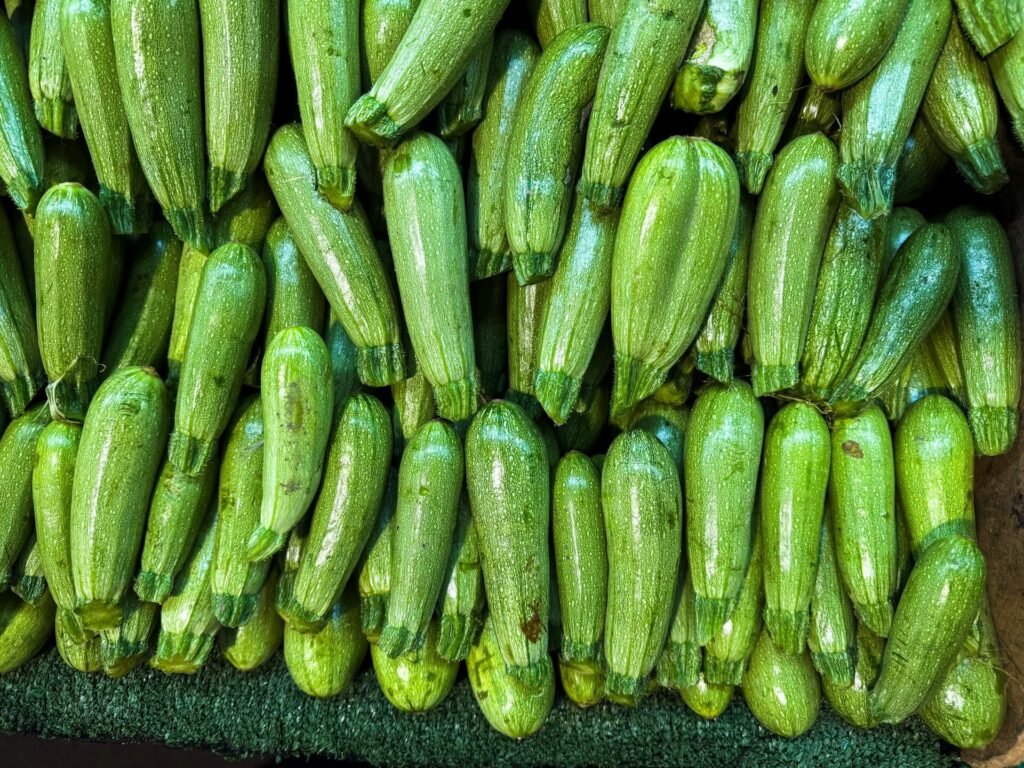
Zucchini is safe, versatile, and easy to digest, making it a top choice for everyday veggie snacks.
Benefits:
Very low in calories – weight-friendly.
Good source of vitamin C, potassium, and fiber.
Supports hydration and digestion.
How to prepare:
Slice raw into sticks or steam/boil lightly.
Serve plain, no oils or spices.
Portion size:
Small dogs: 2–3 slices.
Large dogs: up to ½ cup chopped.
Caution:
Too much may cause loose stools.
Pro tip: Shred zucchini and mix into dog food for a hidden nutrient boost.
12. Brussels Sprouts – Tiny But Powerful
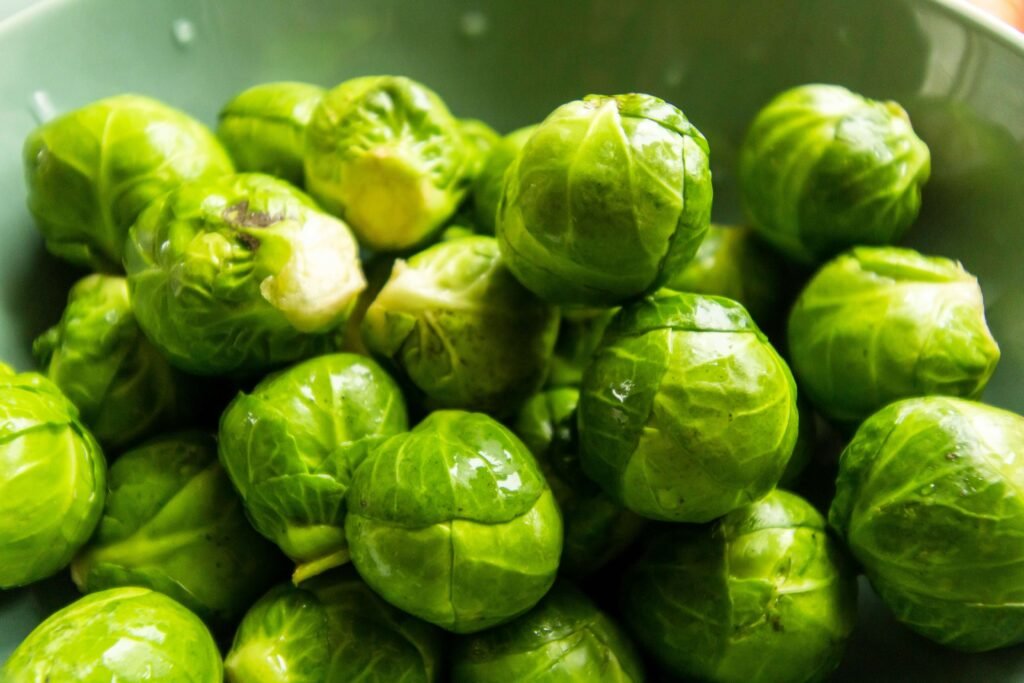
Brussels sprouts are nutrient-rich, but they also cause gas, so moderation is key.
Benefits:
High in fiber and antioxidants.
Good source of vitamins C and K.
Supports healthy digestion (in small amounts).
How to prepare:
Steam or boil until soft.
Cut into halves or quarters.
Portion size:
Small dogs: ½ sprout.
Large dogs: 1–2 sprouts max.
Only feed occasionally.
Caution:
Too many can cause bloating and stomach upset.
Unique tip: Mix tiny portions with other veggies instead of feeding alone.
13. Bell Peppers – Immune Boost, Vitamin C
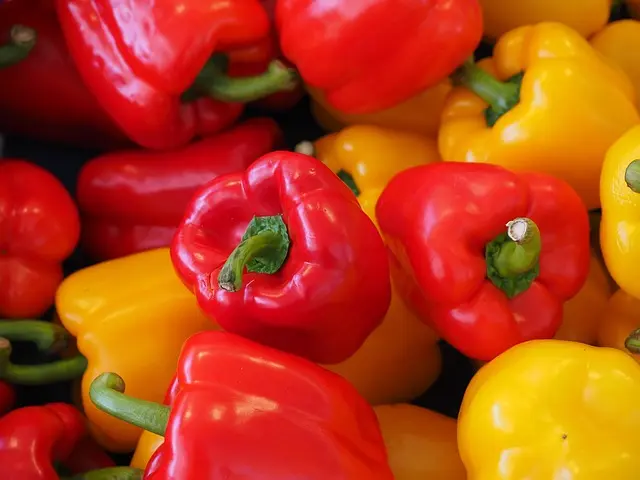
Most people think only fruits are packed with vitamin C, but here’s a surprise – bell peppers are actually richer in vitamin C than oranges! And yes, dogs can safely enjoy them in moderation.
Bell peppers are full of antioxidants, beta-carotene, and vitamin A which keep your dog’s immune system strong and promote a shiny coat. Their crunchiness also makes them a fun low-calorie snack.
Benefits:
Rich in vitamin C – immune system support
Packed with beta-carotene – good for eye health
Low in calories – great for weight control
Adds variety and color to your dog’s bowl
How to prepare:
Wash thoroughly to remove any pesticides.
Remove seeds and core (they can upset your dog’s stomach).
Chop into small bite-sized pieces.
Serve raw for crunchiness or lightly steamed for easier digestion.
Portion size:
Small dogs: 1–2 small slices, a few times a week.
Medium/Large dogs: 2–4 slices, mixed into meals or as a snack.
Always start with a small amount to check tolerance.
Caution:
Don’t give your dog spicy peppers (like chili or jalapeños). Stick to red, yellow, or green bell peppers, and serve them raw or lightly steamed.
14. Cauliflower – Low-Calorie, Fiber
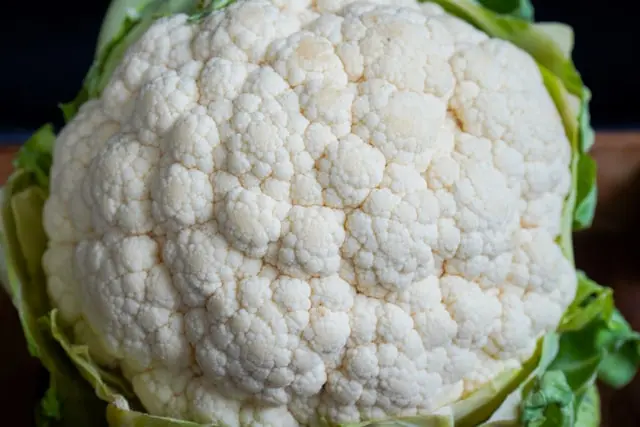
Cauliflower might not look exciting, but it’s a fantastic diet-friendly vegetable for dogs. It’s low in calories, high in fiber, and supports better digestion and weight management.
Dogs that struggle with constipation or need a little extra fiber in their diet can benefit from cauliflower. Plus, it contains vitamin K, vitamin C, and folate that help with overall immunity and bone health.
Benefits:
High in fiber – supports healthy digestion
Low-calorie – perfect for weight loss diets
Contains vitamins K & C – helps bones and immunity
Works as a light crunchy snack
How to prepare:
Wash well and cut into florets.
Steam or boil lightly (plain – no oil, salt, or spices).
Mash or chop into small pieces for easy chewing.
Can be mixed with dog food or given as a snack.
Portion size:
Small dogs: 1–2 florets, once or twice a week.
Medium/Large dogs: 2–3 florets, up to 2–3 times a week.
Avoid overfeeding to prevent gas and bloating.
Caution:
Feeding too much cauliflower can cause gas and bloating. Stick to small amounts, steamed or boiled without seasoning.
15. Lettuce – Hydration, Light Snack
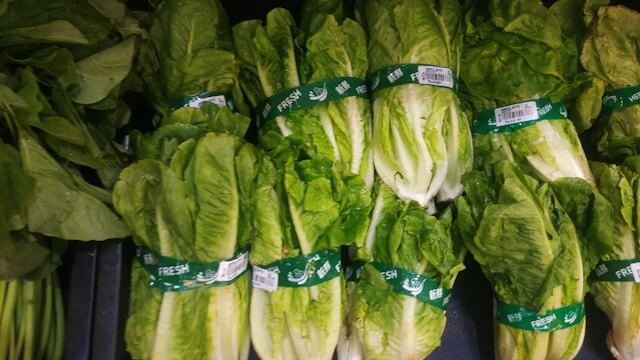
Lettuce often gets a bad rap for being “empty calories,” but for dogs, it’s actually a safe and refreshing snack. Packed with water, it helps keep your pup hydrated on hot days. Romaine and iceberg are both safe, but romaine has more nutrients like vitamins A and K.
Benefits:
Hydration boost (high water content).
Low in calories → perfect for overweight dogs.
Light fiber for digestion.
How to prepare:
Chop lettuce into small, bite-sized pieces to avoid choking. Serve raw only (no dressings, seasonings, or oils).
Caution:
Too much can lead to loose stools. Stick to a few leaves as an occasional crunchy treat.
16. Beets – Blood Health, Antioxidants
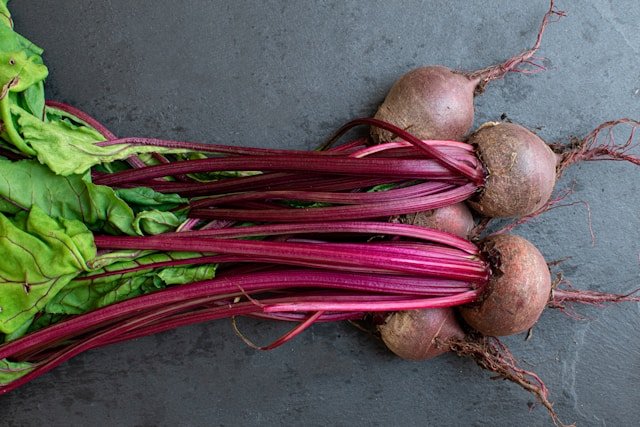
Beets are nutrient-dense and bring natural sweetness that most dogs enjoy. Rich in folate, fiber, manganese, and potassium, they support blood health and digestion. The antioxidants in beets also help fight inflammation.
Benefits:
Boosts red blood cell function.
Supports liver detoxification.
Improves digestion and gut health.
How to prepare:
Always cook (steam or boil) beets before feeding, as raw beets can be hard to digest. Serve in small, bite-sized pieces or puree into food.
Caution:
Can temporarily make urine or stool reddish (not harmful). Avoid canned beets with salt or preservatives.
17. Parsnips – Vitamin C, B6, Potassium
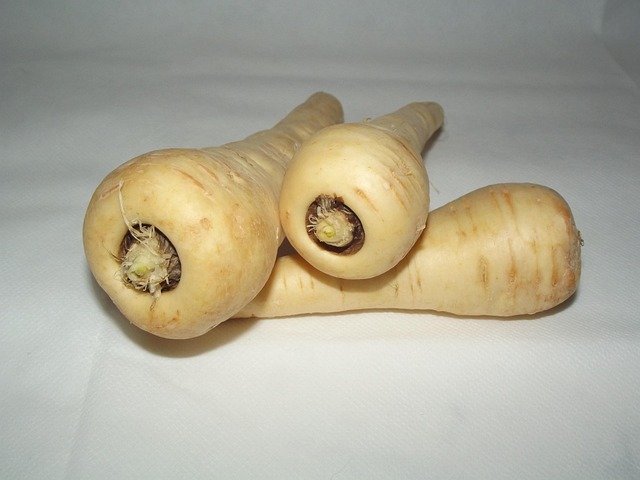
Can temporarily make urine or stool reddish (not harmful). Avoid canned beets with salt or preservatives.
Benefits:
Boosts immune system.
Supports nervous system and metabolism.
Helps maintain healthy muscles.
How to prepare:
Cooked parsnips are easier to digest than raw. Steam or boil lightly and cut into small chunks.
Caution:
Since they’re starchy, avoid giving parsnips daily—better as an occasional treat.
18. Butternut Squash – Digestion & Coat Health
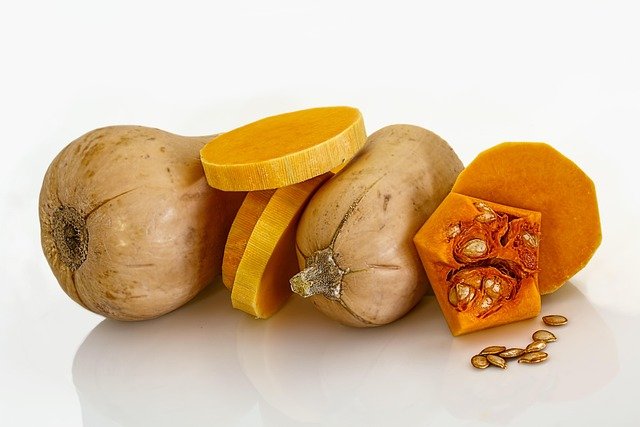
Butternut squash is a powerhouse veggie for dogs. It’s full of fiber, beta-carotene, and vitamins A and C, all of which support vision, skin, coat, and digestion.
Benefits:
Soothes upset stomachs.
Improves stool quality.
Supports shiny coat and healthy skin.
How to prepare:
Always cook before serving (steam, bake, or boil). Remove the skin and seeds—they’re tough and not safe for dogs.
Caution:
Serve plain, never with butter, spices, or sugar. Too much can cause diarrhea.
19. Cabbage – Immune Boost, But Gas Warning
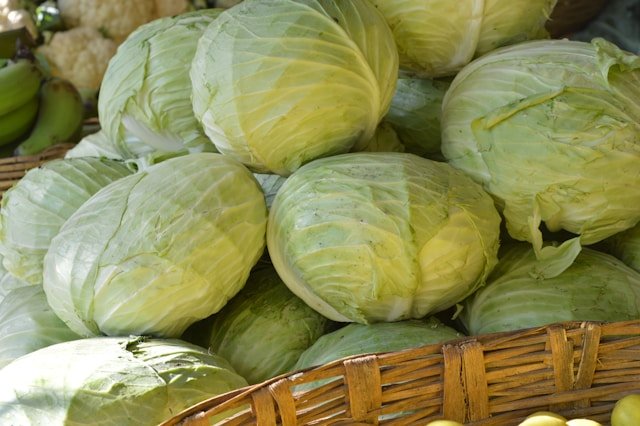
Cabbage is loaded with antioxidants, fiber, and vitamins C and K. It helps fight free radicals, improves digestion, and even supports joint health. Dogs can enjoy green, red, or Savoy cabbage.
Benefits:
Supports immune system.
Aids digestion.
Contains cancer-fighting compounds (glucosinolates).
How to prepare:
Lightly steam or boil to reduce the risk of gas. Serve in small amounts as a side veggie.
Caution:
Too much raw cabbage can cause bloating or thyroid suppression (goitrogens). Always feed in moderation.
20. Turnips – Low-Calorie Mineral Boost
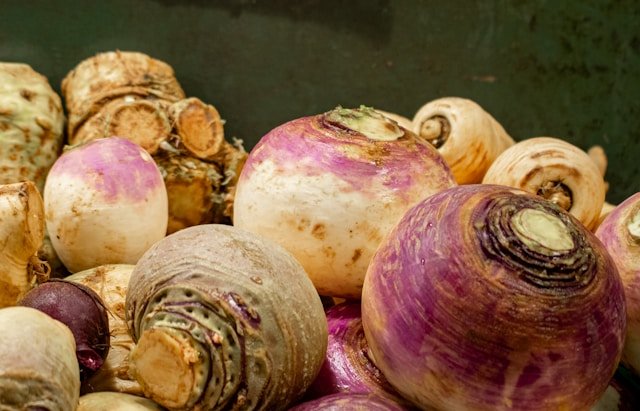
Turnips are a great root vegetable that many people overlook. They’re rich in fiber, calcium, and potassium, making them a nutritious, low-calorie option for dogs.
Benefits:
Supports bone health.
Aids in digestion and weight control.
Provides minerals for strong muscles.
How to prepare:
Peel, cook, and chop into bite-sized pieces. You can also mash them into your dog’s food.
Caution:
Avoid giving turnip greens in excess as they may irritate the thyroid. Serve sparingly.
21. Edamame – Plant Protein & Omega-3s
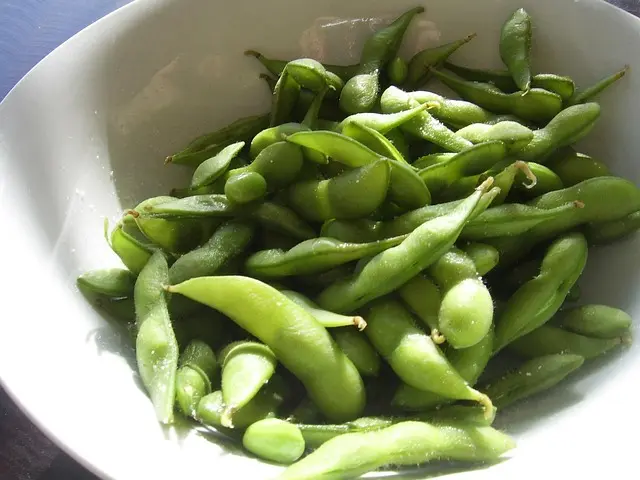
Edamame (young soybeans) is a fantastic snack for dogs in moderation. It’s packed with plant protein, omega-3 fatty acids, fiber, and essential vitamins like vitamin K and folate. These nutrients support joint health, digestion, and overall energy levels.
How to prepare:
Steam edamame and remove the beans from the pods before serving. Never give the pods, as they’re tough to digest.
Portion size:
A few beans as an occasional treat.
Caution:
Steam edamame and remove the beans from the pods before serving. Never give the pods, as they’re tough to digest.
22. Asparagus – Vitamin-Rich but Texturally Tricky
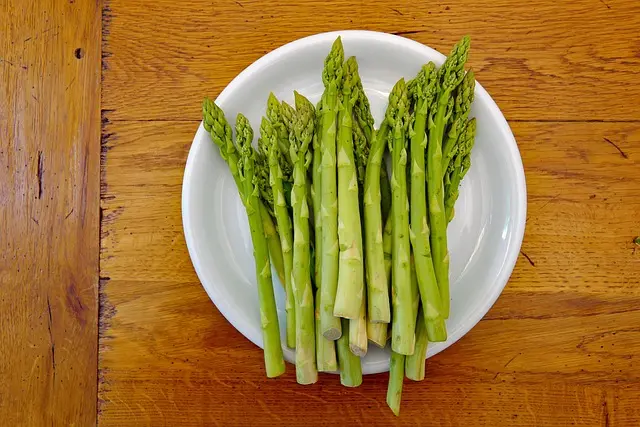
Asparagus provides vitamins A, C, E, and K, plus antioxidants and fiber. It supports immune function and healthy digestion. However, its tough, fibrous stalks can be hard for dogs to chew and digest raw.
How to prepare:
Lightly steam or boil asparagus until soft and chop into small bite-sized pieces.
Portion size:
A few small pieces mixed into meals.
Caution:
Raw asparagus can be a choking hazard, so always cook first.
23. Radishes – Crunchy, Low-Calorie Snack
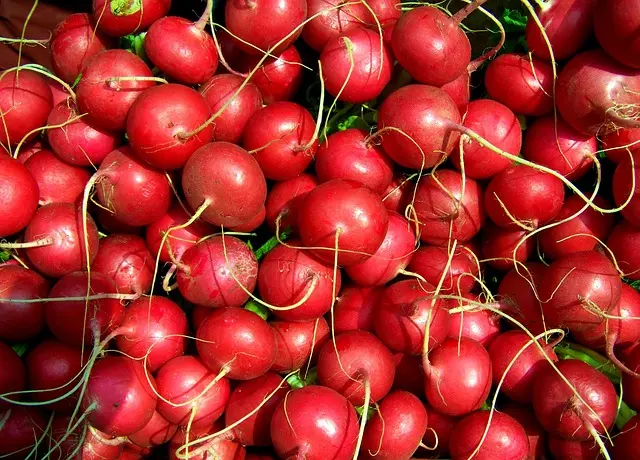
Radishes are crunchy, hydrating, and low in calories, making them a fun snack for dogs who like crisp textures. They contain fiber, vitamin C, and minerals that support digestion and immunity.
How to prepare:
Wash, peel if necessary, and cut into thin slices to prevent choking.
Portion size:
1–2 small radish slices occasionally.
Caution:
Some dogs dislike the peppery taste, and too much can cause stomach upset.
24. Seaweed/Kelp – Mineral Powerhouse

Seaweed and kelp are rich in iodine, calcium, magnesium, and trace minerals, which support thyroid health, bone strength, and skin condition. They’re often used in high-quality dog foods and supplements.
How to prepare:
Use powdered kelp or dried seaweed flakes (made for pets) sprinkled in small amounts over food.
Portion size:
Tiny sprinkle (1/8 teaspoon) depending on dog size.
Caution:
Too much iodine can affect thyroid function, so keep portions minimal. Avoid seaweed from beaches—it may contain toxins or salt.
25. Herbs (Parsley, Basil, Cilantro) – Flavorful & Functional
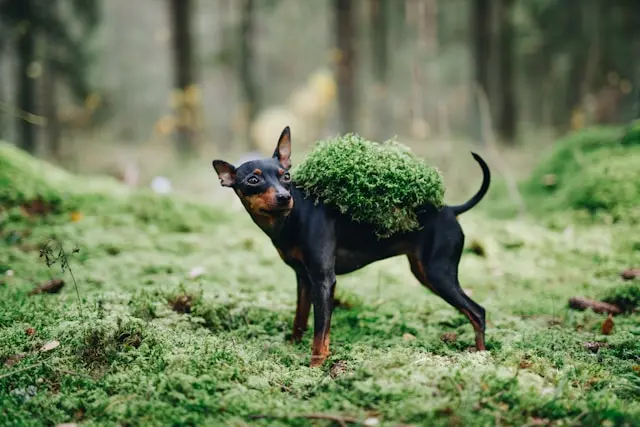
Fresh herbs aren’t just for humans—dogs benefit too! Parsley freshens breath and contains chlorophyll. Basil is anti-inflammatory and rich in antioxidants. Cilantro supports detox and digestion.
How to prepare:
Chop fresh herbs finely and sprinkle a pinch over meals.
Portion size:
A few leaves, not more than a teaspoon per meal.
Caution:
Avoid herbs like garlic or chives (toxic to dogs). Stick only to dog-safe herbs.
According to the American Kennel Club’s guide on fruits and vegetables dogs can or can’t eat, many common vegetables—when fed in moderation—are considered safe for dogs.
Vegetables Dogs Should Avoid (Toxic & Unsafe)
Not all vegetables are dog-friendly. Some common veggies can actually be toxic for dogs and cause serious health problems. Here are the main ones to avoid:
Onions, Garlic, Leeks & Chives (Allium family)
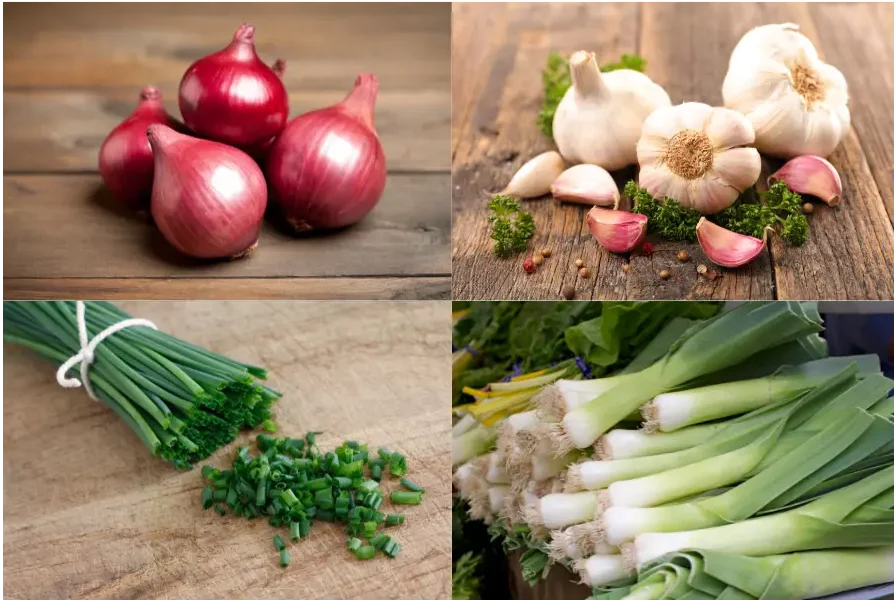
Why unsafe: Damage red blood cells → leads to anemia.
Signs of toxicity: Weakness, pale gums, vomiting, rapid heartbeat.
Note: Even small amounts (cooked, raw, or powdered) can be harmful.
Wild Mushrooms

Why unsafe: Many wild varieties contain dangerous toxins.
Signs of toxicity: Drooling, vomiting, seizures, liver failure.
Note: Only store-bought edible mushrooms are considered safe in moderation.
Avocado
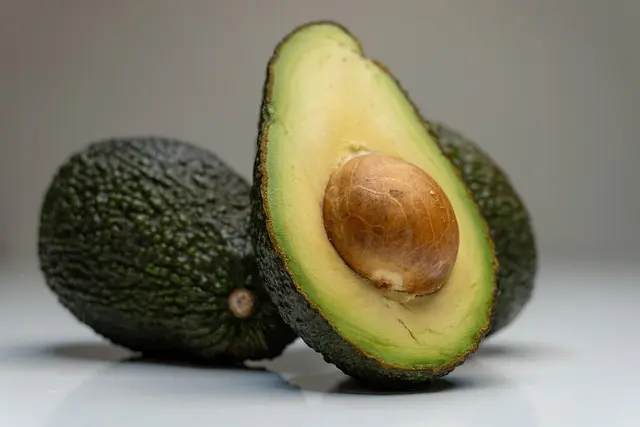
Why unsafe: Contains persin, which can cause stomach upset, vomiting, diarrhea.
Extra risk: The pit is a choking hazard and can cause intestinal blockage.
Rhubarb
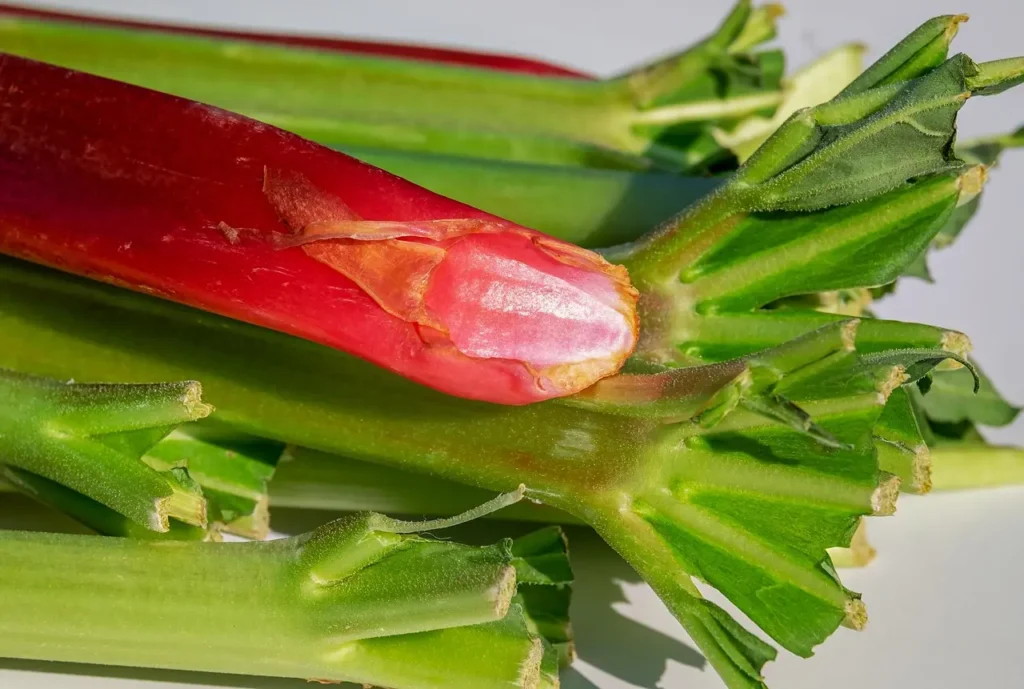
Why unsafe: Leaves contain oxalates → kidney failure risk.
Signs of toxicity: Tremors, drooling, kidney issues.
Unripe Tomatoes & Tomato Plants
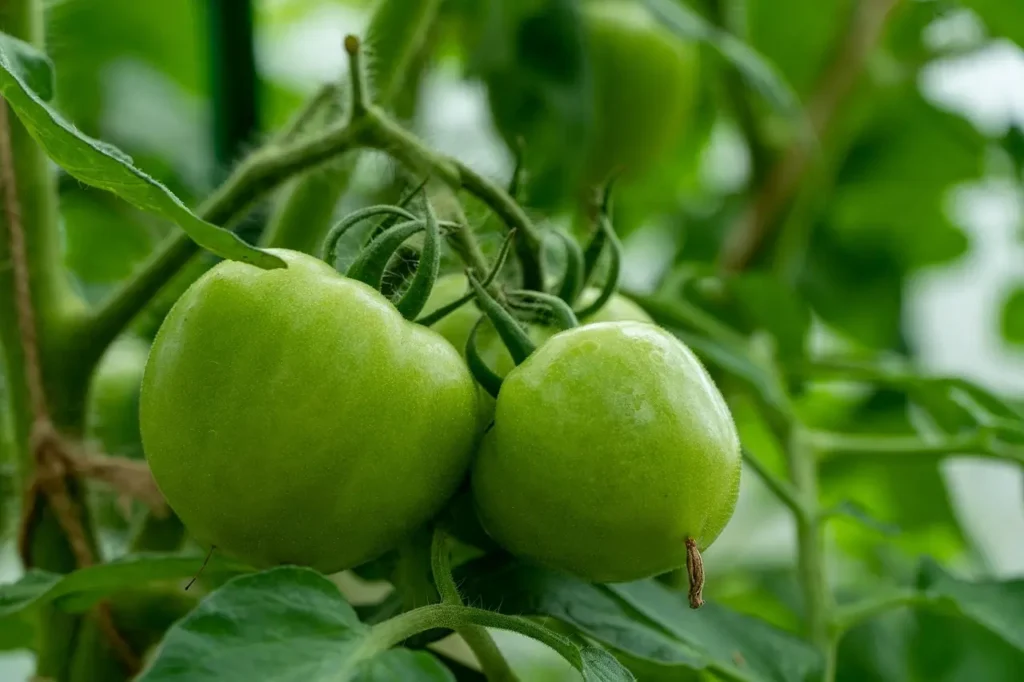
Why unsafe: Contain solanine → toxic to dogs in large amounts.
Signs of toxicity: Upset stomach, lethargy, weakness.
Note: Ripe red tomatoes are generally safe in moderation.
Raw Potato Skins, Green Potatoes, Potato Plants
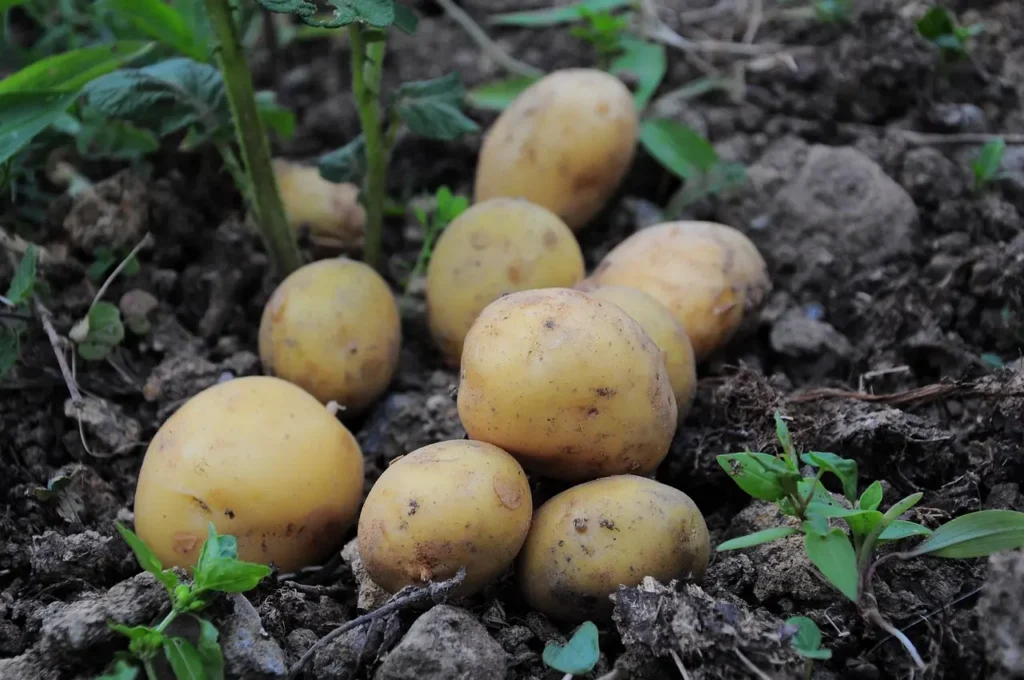
Why unsafe: High in solanine → very toxic.
Signs of toxicity: Vomiting, diarrhea, confusion, slow heart rate.
Note: Plain, cooked white or sweet potatoes are safe in small amounts.
Warning Signs of Vegetable Toxicity in Dogs
If your dog eats a toxic vegetable, watch for:
Vomiting & diarrhea
Drooling
Weakness, tremors, seizures
Pale gums or yellowing eyes (liver issue)
Loss of coordination or collapse
What to do:
If you suspect poisoning, contact your vet or an emergency pet poison hotline immediately.
The ASPCA’s toxic plant list confirms that onions, garlic, rhubarb, and certain mushrooms can be highly dangerous to dogs.
How to Prepare Vegetables for Dogs (Cooking & Feeding Tips)
Dogs can enjoy vegetables in different forms, but the way you prepare them makes all the difference for safety and digestion.
Raw Vegetables
Best for crunchy snacks (carrots, cucumbers, celery).
Help clean teeth and keep dogs busy.
Some veggies (like broccoli or kale) may cause gas if eaten raw.
Steamed Vegetables
Most recommended method.
Steaming keeps nutrients intact while making veggies easier to digest.
Great for leafy greens, broccoli, cauliflower, and zucchini.
Boiled Vegetables
Safe, but can lose some vitamins and minerals in the water.
Use boiling for pumpkin, sweet potatoes, and green beans.
Tip: Don’t add salt or seasonings.
Pureed or Mashed
Ideal for dogs with sensitive stomachs or puppies.
Helps release nutrients and is easy to mix with kibble or raw food.
Works well with spinach, peas, pumpkin, and squash.
Avoid Seasonings & Fats
Never cook veggies with:
Butter, oil, or frying methods
Salt, garlic, onions, or spices
These can upset your dog’s stomach or even be toxic.
Mixing Vegetables with Your Dog’s Meals
Kibble: Add steamed or raw chopped veggies as a healthy topper.
Raw Diet: Balance with protein and safe veggies for fiber.
Homemade Dog Food: Vegetables add vitamins, minerals, and hydration.
Portion Sizes: The “10% Rule”
Vegetables and treats should not exceed 10% of your dog’s daily diet.
Small dogs: 1–2 tablespoons of cooked veggies daily.
Medium dogs: 2–4 tablespoons.
Large dogs: ¼ – ½ cup daily.
This keeps your dog’s diet balanced while still giving them the benefits of vegetables.
AKC notes that broccoli is safe when unseasoned and in small quantities—over 10% of daily intake may cause digestive upset.
Special Diets & Vegetables (Tailored Use Cases)
Not all dogs have the same needs. Some struggle with weight, some with tummy troubles, and some just need a little variety in their bowl. Here’s how vegetables can be tailored to different canine diets:
Want to know which veggies suit sensitive stomachs, allergies, or grain-free diets? Explore our in-depth guide: Special Diets for Dogs: Allergies, Sensitive Stomach, Grain-Free & More.
1. High Fiber Vegetables for Dogs
If your pup has digestion issues or needs to shed a few pounds, high-fiber vegetables are a natural helper.
Examples: Broccoli, green beans, pumpkin.
Why: Fiber regulates digestion, supports healthy gut bacteria, and keeps dogs feeling full.
2. Vegetables for Dogs with Sensitive Stomach
Dogs with sensitive stomachs need gentle, easy-to-digest vegetables.
Examples: Zucchini, sweet potato, pumpkin.
Why: These provide energy without upsetting the stomach and are soft when steamed or pureed.
3. Vegetables for Overweight Dogs
If your dog is on a weight-loss journey, veggies can be used as low-calorie treats.
Examples: Cucumber, lettuce, celery.
Why: These add crunch and hydration but almost no calories, making them perfect snack swaps.
4. Vegetables for Homemade Dog Food Recipes
When preparing balanced homemade meals, veggies are often used as fillers, toppers, or nutrient boosters.
Examples: Carrots, peas, spinach, pumpkin.
Why: They blend well with proteins like chicken or beef and add vitamins, minerals, and fiber.
Planning to cook for your pup? Don’t miss our step-by-step Homemade Dog Food Guide with recipes and safety tips.
Conclusion
Dogs can safely enjoy a wide variety of vegetables — from carrots and green beans to pumpkin and cucumbers. These add vitamins, minerals, fiber, and hydration to your pup’s diet, while keeping treats healthy and low-calorie.
Just remember: Some vegetables like onions, garlic, avocado, and raw potatoes are toxic to dogs, so always double-check before feeding.
Golden rule: Start small, serve in moderation, and never add seasonings like salt, butter, or spices.
Easy Next Step: Try mixing a few safe vegetables into your dog’s meals today — it’s a simple, vet-approved, and budget-friendly way to boost their nutrition.
Vegetables are just one part of the puzzle. For a complete breakdown of the best foods overall, see our Best Dog Food 2025: The Ultimate Guide.
FAQs About Vegetables for Dogs
Can dogs eat vegetables every day?
Yes most dogs can safely eat vegetables every day, as long as you follow the 10% rule (veggies + treats shouldn’t make up more than 10% of total diet). They’re great as meal toppers or snacks but shouldn’t replace a complete, balanced dog food.
What’s the best raw vegetable for dogs?
Some of the best raw vegetables for dogs include carrots (great for teeth and eyes), cucumber (hydration and low-calorie), and green beans (fiber and weight control). Always cut them into small, bite-sized pieces to prevent choking.
What vegetables are easiest to digest for dogs?
The easiest vegetables for dogs to digest are usually soft and mild ones like zucchini, pumpkin, and sweet potato (cooked and mashed). If your dog has a sensitive stomach, avoid cruciferous veggies like broccoli or cauliflower in large amounts.
Can puppies eat vegetables?
Yes, puppies can eat some vegetables in small amounts. Stick to gentle options like mashed carrots, peas, or pumpkin. Avoid hard raw veggies until they’re older, and remember that puppies need a nutrient-dense puppy diet first — veggies are just extras.
Can dogs eat frozen vegetables?
Yes, most frozen vegetables for dogs are safe, as long as they’re plain and without added salt, butter, or seasoning. Frozen green beans, peas, or carrots can even make a fun crunchy treat in the summer.
Quick Tip: Always introduce new veggies slowly and watch for any digestive upset.
Can dogs eat leafy greens like spinach or lettuce?
Yes, dogs can eat leafy greens such as lettuce, kale, and spinach in small amounts. They’re rich in vitamins, but spinach has oxalates which can affect kidneys if fed too often. Stick to moderation.
Are cooked vegetables better than raw for dogs?
It depends! Some dogs digest cooked vegetables (like steamed carrots, broccoli, or pumpkin) more easily, while others enjoy raw crunch like cucumber or bell peppers. Light steaming often makes nutrients easier to absorb.
Can vegetables help dogs lose weight?
Yes, vegetables like green beans, cucumber, and celery are low-calorie and high in fiber, making them great snacks for dogs on a weight loss diet. They keep dogs full without adding excess calories.
Are canned vegetables safe for dogs?
Canned vegetables are usually not recommended for dogs because they often contain salt, preservatives, or seasonings. Fresh, steamed, or frozen plain vegetables are always a healthier choice.
What vegetables are toxic to dogs?
Dogs should never eat toxic vegetables like onions, garlic, leeks, chives, avocado, wild mushrooms, rhubarb, or unripe tomatoes. These can cause serious health issues, including anemia, digestive upset, or even organ failure.


